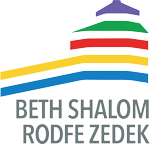Scrollers Preview
Parashat Tetzaveh
March 3, 2012
Rabbi Rachel Goldenberg
This week in Parashat Tetzaveh, we continue with the instructions for creating a sacred space among the Israelites for God’s Presence to dwell. Last week we received the instructions for the Mishkan, or Tabernacle. This week, the institution of the priesthood is created, and we receive the instructions for their garments.
The scholar Nahum Sarna writes in the JPS commentary, “Just as sacred space must be differentiated from profance space, so the occupants of the sacred office must be distinguishable from the laity. Hence, special attire, the insignia of office, is ordained for Aaron, the archetypal High Priest, and for his sons, the priests of lower rank.” As we read this section about the priestly vestments, we will not only dive into many details of colors of wool and linen, hems and fringes. We will also come across words such as “l’chavod u’l’tif’aret,” “for dignity and beauty.” We will learn that the High Priest carries the names of the tribes, inscribed on stones, on his shoulders and over his heart, “l’zikaron,” “for remembrance.” The Torah spends so much time on these outfits for a reason – the vestments transform the regular people of Aaron and his sons into walking symbols.
There is a wonderful book read by many rabbinical students these days called The Rabbi as Symbolic Exemplar: By the Power Vested in Me, by Rabbi Jack Bloom (from Connecticut, by the way!) In this book, Bloom examines how the symbolic role that serves as the source of the rabbi’s authority and power can lead to disillusionment and disenchantment. It details how symbolic exemplarhood is created, what its downside is, what power it offers, how it can be used effectively, how rabbis and other clergy can deal with their inner lives, and what can be done to help them stay “human” while maintaining their leadership.
I recently spoke with Lizz Goldstein, a rabbinical student who grew up at CBSRZ. She interviewed me about this notion of the rabbi as “symbolic examplar.” It was fascinating for me to reflect on how the symbolic power of my role can be used effectively and how it can sometimes get in the way of folks relating to me as “human.” Is this what God intended for the priests? What are the upsides and downsides for the priests of being these walking symbols, and what are the upsides and downsides for the people? Do we need to have symbolic exemplars, whether priests of rabbis? Is it possible to create a sacred community without leaders with “power vested in them”?
On this Shabbat that anticipates Purim, I look forward to investigating the power of the costumed professional!

No comments:
Post a Comment